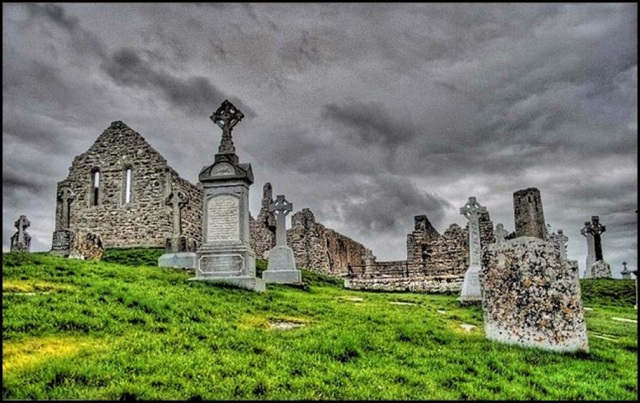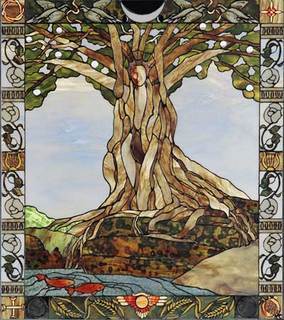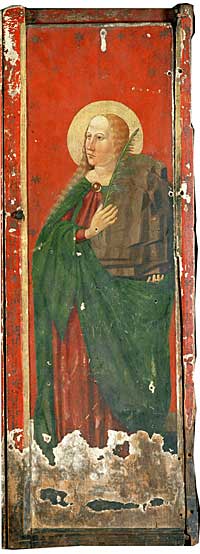This poem of mine was inspired by the vision of two early Irish monks. Several years ago I was on the beach with my family at Inishmor in the Aran islands where it took place. St. Ciarán lived in the sixth century, and after spending time with St. Enda on Aran island, responded to a vision and founded a small monastery on the banks of the Shannon river at Clonmacnois in County Offaly. Over the centuries it grew into a vast monastic complex now in ruins, and its famous school became known as a “university of saints and scholars”. It remains an important place of pilgrimage.

A Tree Most Fruitful
One by One
the pilgrims come,
drawn from every
sea-washed shore.
Expectant hearts
ascend a green hill
to find
the broken
chapel wall,
the haven of my resurrection.
Towering crosses
carved from stone
taught the Word,
faithful lanterns for
an eager nation.
In the company of angels
I watched the centuries unfold,
like a protective hen
guiding her young.
How I grieved to see it brought to ruin,
senseless wrath and plunder.
Yet buildings come and go,
flotsam on the stream of time.
Beyond melancholy
dilapidation,
spirit-given visions still endure:
The fiery sun sank beneath the waves,
Aran Island bathed in salty twilight.
In wet sand I sat with holy Enda,
to us was given sight in luminous darkness,
the future of our people laid before us:
a great Tree,
rooted deep in Ireland’s heart
and watered by a river.
Birds beyond number
sheltered there,
filled the island with their song,
bore its fruit to distant lands
beyond our comprehension.
Sent forth with Enda’s blessing
and the teaching of the saints,
on the banks of the Shannon
I planted seeds of prayer and fasting,
and still they come,
still they come,
to be renewed
beneath the clouds
and taste the fruit
imperishable.




